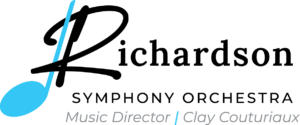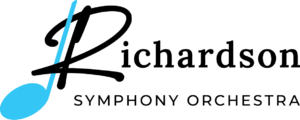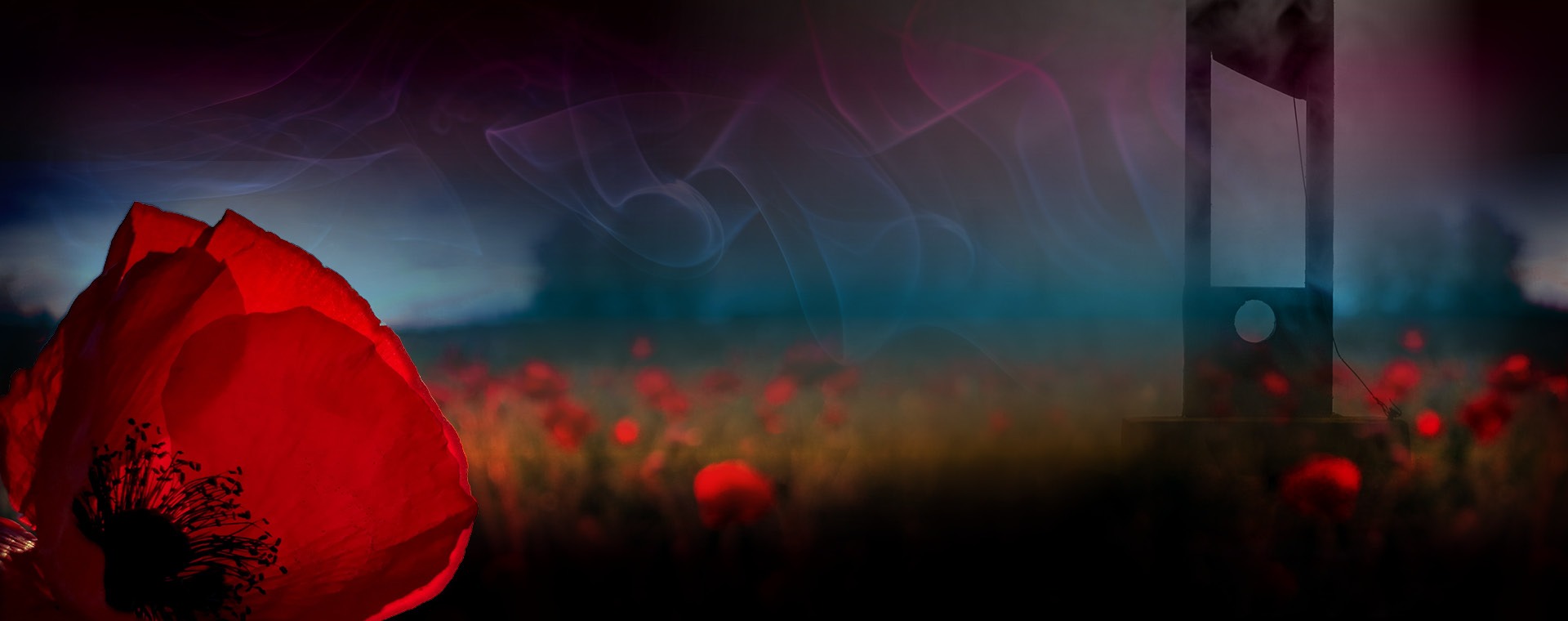
Season Opener: Beethoven & Berlioz
BEETHOVEN: Piano Concerto No. 3 in C minor, Op. 37
Kenny Broberg, piano
BERLIOZ: Symphonie fantastique
The performance is approximately 110 minutes including a 20-minute intermission after the first piece
Buy Tickets HERE
Overview
Witness the magic of Ludwig van Beethoven’s Piano Concerto No. 3 in c minor, Op. 37 brilliantly interpreted by the sensational Kenny Broberg on the piano. Feel the raw emotion and depth of Beethoven’s pianistic masterpiece as Broberg’s fingers dance across the keys, transporting you to a world of passion and fantasy.
But the excitement doesn’t end there! Brace yourself for Hector Berlioz’s Symphonie fantastique, a thrilling rollercoaster of sound and sensation. Lose yourself in Berlioz’s mesmerizing orchestration as he weaves a tale of love, obsession, and dreams gone wild. From the haunting melodies to the explosive crescendos, Symphonie fantastique promises an electrifying ride through the depths of human emotion. Anchored by the unforgettable idée fixe motif that winds its way through the symphony, audiences will be captivated and entranced by the work’s spellbinding charm.
Don’t miss this chance to experience two iconic symphonic works in one unforgettable evening. Get your tickets now and immerse yourself in the awe-inspiring power of Beethoven and the daring creativity of Berlioz. It’s a musical adventure you won’t want to miss!
Program Details
BEETHOVEN: Piano Concerto No. 3 in C minor, Op. 37
I. Allegro con brio
II. Largo
III. Rondo. Allegro – Presto
Soloist: Kenny Broberg, piano
Length: c. 34 minutes, including 3 separate movements (followed by a 20-minute intermission)
Composer: Ludwig van Beethoven, born December 17, 1770, in Bonn, Germany, and died March 26, 1827 (aged 56) in Vienna, Austria
Composed: c. 1800, Although the first performance was on April 5, 1803, with Beethoven as the soloist. This was also the premier of his 2nd Symphony in D Major, Op. 36
What else happened in 1803?
- Ohio becomes the 17th state of the Union
- 1st US public library opens in Connecticut
- US Senate ratifies the Louisiana Purchase for $15 million
BERLIOZ: Symphonie fantastique: Episode de la vie d’un artiste…en cinq parties, Op. 14
(Fantastic Symphony: Episode in the Life of an Artist, in Five Parts, Op. 14)
I. Rêveries – Passions (Dreams & Passions)
II. Un bal (A Ball)
III. Scène aux champs (Scene in the Fields)
IV. Marche au supplice (March to the Scaffold)
V. Songe d’une nuit du sabbat (Dream of a Night of the Sabbath)
Length: c. 55 minutes, including 5 separate movements
Composer: Hector Berlioz, born December 11, 1803, in Isére, France, and died March 8, 1869 (aged 65) in Paris, France
Composed: 1829-1830
What else happened 1830?
- Robert Schumann hears the violinist Paganini play in Frankfurt
- President Andrew Jackson signs the Indian Removal Act setting the stage for the Cherokee Trail of Tears
- 1st US railroad station opens in Baltimore, MD
Performers
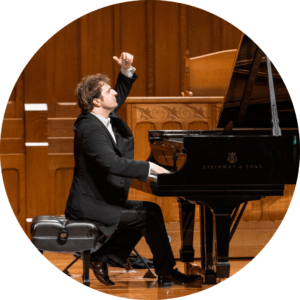
During his auspicious career before winning the 2021 American Pianist Awards and Christel DeHaan Classical Fellowship, Kenny Broberg captured the silver medal at the 2017 Van Cliburn International Piano Competition and a bronze medal at the 2019 International Tchaikovsky Competition, as well as prizes at the Hastings, Sydney, Seattle and New Orleans International Piano Competitions. These achievements have made him one of the most decorated and internationally renowned pianists of his generation. Broberg is lauded for his inventive, intelligent and intense performances.
“Broberg mastered everything he performed over the weekend, pulling a palette of moods from every register,” The Indianapolis Star writes of Broberg’s performance during the Finals for American Pianists Awards. “In the ‘Dante Sonata’ from Liszt’s Years of Pilgrimage, the pianist easily captured the drama in the journey, marrying all of the energy of those emotions in the epic ending.”
Crediting his first exposure to classical music to his Italian grandfather’s love of the Three Tenors, Broberg began piano lessons on his family’s upright piano at age 6. During his childhood in Minneapolis, he began studying piano with Dr. Joseph Zins at Crocus Hill Studios in Saint Paul. Throughout high school, he balanced his musical lessons with playing baseball and hockey. He remains an avid fan for both the Minnesota Twins and Wild and checks their scores while on breaks during his practice.
Broberg earned a Bachelor of Music degree in 2016 at the University of Houston’s Moores School of Music, studying under Nancy Weems. Broberg is currently a graduate student at Park University in Parkville, Missouri, studying with Stanislav Ioudenitch, the gold medalist at the 2001 Van Cliburn International Piano Competition.
Performing on stages and in concert halls across Europe, Asia, Australia, and North America, Broberg has worked with some of the world’s most respected conductors, including Ludovic Morlot, Kent Nagano, Leonard Slatkin, Vasily Petrenko, Nicholas Milton, John Storgårds, Carlos Miguel Prieto, and Stilian Kirov. He has collaborated with the Royal Philharmonic and the Minnesota, Indianapolis, Kansas City, Sydney, Seattle and Fort Worth Symphonies, among others. He has been featured on WQXR, Performance Today, Minnesota Public Radio and ABC (Australia) radio, and presented his original composition “Barcarolle” on NPR in March 2021.
As part of the American Pianist Awards, he will record his first studio album with the Steinway & Sons label.
The Christel DeHaan Classical Fellowship also provides Broberg with a prize valued at $200,000 designed to assist him as he builds his musical career. It includes $50,000 in cash, two years of professional development and assistance and performance opportunities worldwide. Broberg will also work with students and host performances during his time on campus as the Artist-in-Residence at the University of Indianapolis. Before embarking on his international concerts, Broberg performed in his adopted home of Kansas City, Missouri, for the concert “KC Celebrates Kenny Broberg” in September 2021.
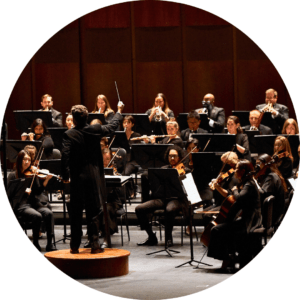
Just north of Dallas and nestled in the vibrant city of Richardson, Texas, the Richardson Symphony Orchestra (RSO) embodies the essence of what it means to be a regional symphony orchestra. Led by Maestro Clay Couturiaux, the RSO’s journey is a testament to unwavering dedication and musical excellence.
Since its founding in 1961, the RSO has remained steadfast in its mission to enrich lives through the transformative power of music. From enchanting renditions of classical staples to daring explorations of contemporary works, the orchestra’s repertoire mirrors the rich tapestry of human emotion and experience.
The symphony has captivated audiences with electrifying performances, seamlessly blending precision and passion. Under Maestro Couturiaux’s guidance, each note resonates with soul-stirring depth, leaving listeners enraptured.
Beyond the concert hall, the RSO is a beacon of community engagement, nurturing young talent and enriching lives through the transformative power of music. With every crescendo, the orchestra reaffirms its status as a cultural gem, enriching the tapestry of the city of Richardson and beyond with symphonic splendor.
Extras
Berlioz Program Notes
Below are descriptive program notes penned by Berlioz to explore various episodes in the life of an artist and serve to motivate the character and expression of each movement.
I. Rêveries – Passions (Dreams & Passions)
The author imagines that a young musician, afflicted with that moral disease that a well-known writer calls “the wave of passions” (le vague des passions), sees for the first time a woman who embodies all the charms of the ideal being he has imagined in his dreams, and he falls desperately in love with her. Through an odd whim, whenever the beloved image appears before the mind’s eye of the artist, it is linked with a musical thought whose character, passionate but at the same time noble and shy, he finds similar to the one he attributes to his beloved.
This melodic image and the model it reflects pursue him incessantly like a double idée fixe (fixed idea or fixation). That is the reason for the constant appearance, in every movement of the symphony, of the melody that begins the first Allegro. The passage from this state of melancholy reverie, interrupted by a few fits of groundless joy, to one of frenzied passion, with its gestures of fury, of jealousy, its return of tenderness, its tears, and its religious consolations – all combining to form the subject of the first movement.
II. Un bal (A Ball)
The artist finds himself in the most varied situations — in the midst of the tumult of a party, in the peaceful contemplation of the beauties of nature; but everywhere, in town, in the country, the beloved image appears before him and disturbs his peace of mind.
III. Scène aux champs (Scene in the Fields)
Finding himself one evening in the country, he hears in the distance two shepherds piping a ranz des vaches in dialogue (a traditional melody played on the alpenhorn by Swiss herdsmen to call cattle). This pastoral duet, the scenery, the quiet rustling of the trees gently brushed by the wind, the hopes he has recently found some reason to entertain — all concur in affording his heart an unaccustomed calm, and in giving a more cheerful color to his ideas. He reflects upon his isolation and hopes that his loneliness will soon be over. — But what if she were deceiving him! — This mingling of hope and fear, form the subject of the Adagio. In the end, one of the shepherds again takes up the ranz des vaches while the other no longer replies.
IV. Marche au supplice (March to the Scaffold)
Convinced that his love is unappreciated, the artist poisons himself with opium. The dose, too weak to kill him, plunges him into a sleep accompanied by the most horrible visions. He dreams that he has killed his beloved, that he is condemned and led to the scaffold, and that he is witnessing his own execution. The procession moves forward to the sounds of a march that is now somber and fierce, now brilliant and solemn, in which the muffled noise of heavy steps gives way without transition to the noisiest clamor. At the end of the march the first four measures of the idée fixe reappear.
V. Songe d’une nuit du sabbat (Dream of a Night of the Sabbath)
He sees himself at the sabbath (annual midnight meeting of witches with the Devil), in the midst of a frightful troop of ghosts, sorcerers, and monsters of every kind, who have all come together for his funeral. Strange noises, groans, bursts of laughter, and distant cries upon which other cries seem to answer. The beloved melody appears again, but it has lost its character of nobility and shyness; it is no more than a dance tune, mean, trivial, and grotesque: it is she [his beloved], coming to join the sabbath. — A roar of joy at her arrival. — She takes part in the devilish orgy. — The funeral knell (bell) tolls, a burlesque parody of the Dies Irae [a hymn sung in the funeral rites of the Catholic Church] unfolds, and the sabbath round-dance of witches ensues. In conclusion, and as a chilling cacophony, the sabbath round and the Dies Irae are combined.
